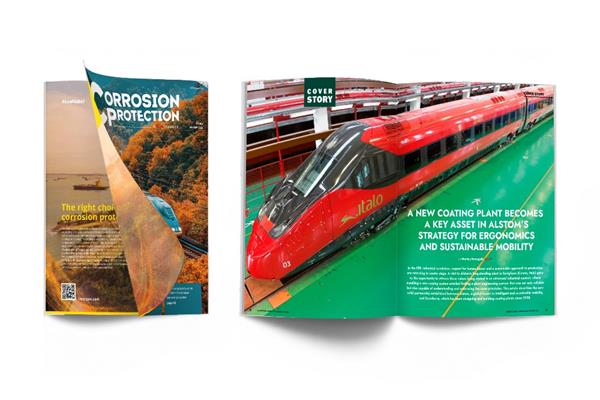
Read the latest issue of the magazine dedicated to corrosion prediction, prevention, protection and mitigation – Special edition on infrastructures!
- Galvanic corrosion.
- Localised corrosion.
- Stress corrosion.
- Hydrogen corrosion.
- Crevice corrosion.
These terms are all familiar to owners, operators and maintainers of infrastructure assets – and they are just some of the corrosion processes to which a road or energy infrastructure may be subjected. In Europe (but also beyond), we have a serious infrastructure ageing problem, which increases the risk of failure due to corrosion. That is why managing corrosion phenomena in metal structures, be they bridges, viaducts or oil and gas pipelines, plays a decisive role in preserving both their aesthetics and functionality and, all the more so, the safety of people and the environment.
Environmental factors such as humidity, temperature and corrosive substances can accelerate corrosion. The composition of the construction material plays a significant role in determining its vulnerability to corrosion. The stresses to which a structure is subjected, such as pressure, mechanical and chemical stress and exposure to varying temperatures, can also make the material more susceptible to corrosion.
All over the world, infrastructures are required to meet safety and management standards initially set in a very different context, due to the morphology of the long-term degradation processes that lead to inevitable damage during these assets’ long service life. These processes vary depending on the conformation of structural elements, the jointing solutions adopted, the selection of corrosion protection systems, the materials specified and the maintenance protocols implemented. Only diagnostics, continuous monitoring and effective corrosion inspection protocols provide the necessary backbone for managing the maintenance of such infrastructure, defining the most appropriate management strategies and assessing the assets’ actual stress conditions.
Designing structures with adequate drainage, ventilation and protection against environmental factors can reduce the chances of corrosion. Using construction methods that minimise the risks of galvanic or crevice corrosion, such as avoiding contact between dissimilar metals or ensuring tight seals at joints, is also crucial. Regular maintenance, including inspection, cleaning and timely repairs, helps control corrosion and ensure the long-term performance of infrastructures.
This Corrosion Protection issue, which will be circulated at more than ten international events and conferences related to metal infrastructure management, provides our readers with many insights and technical articles on the most innovative materials and processes for managing corrosion and maximising the potential of assets over the years.
READ THE MAGAZINE!